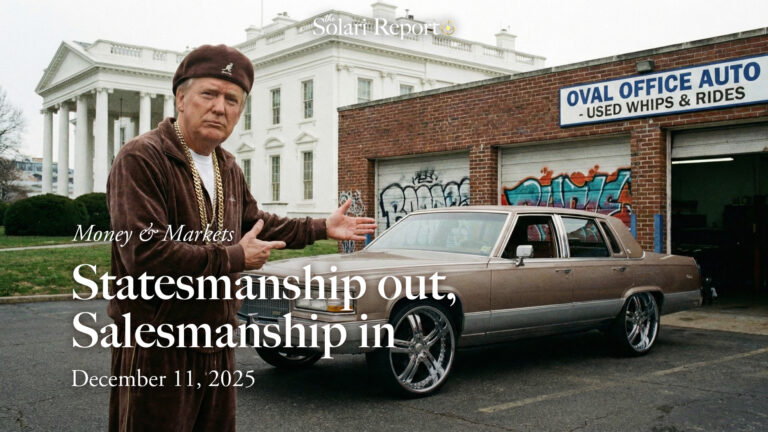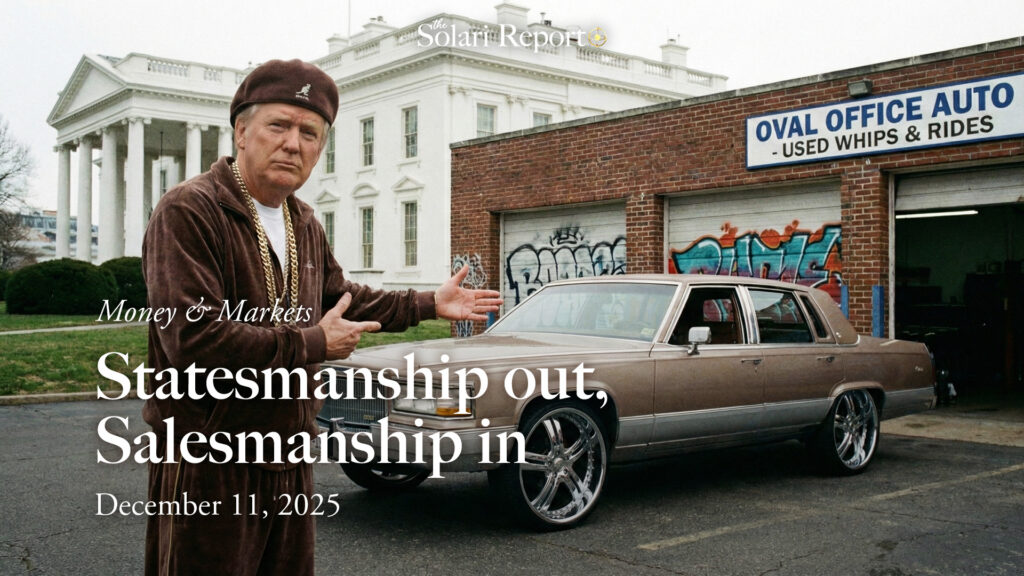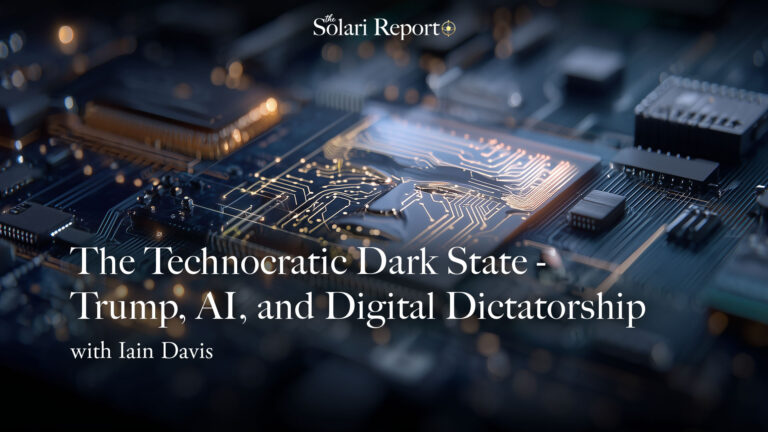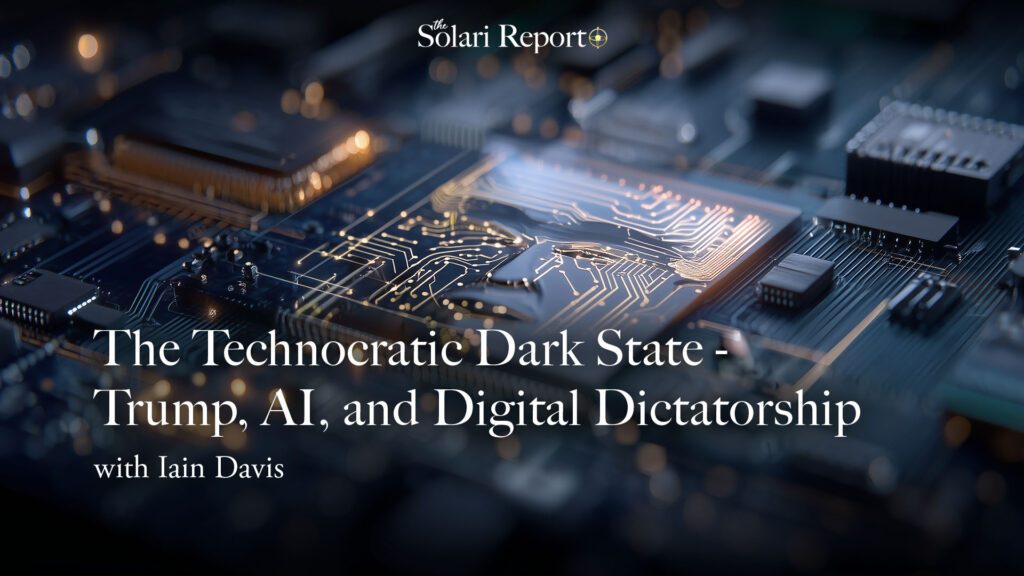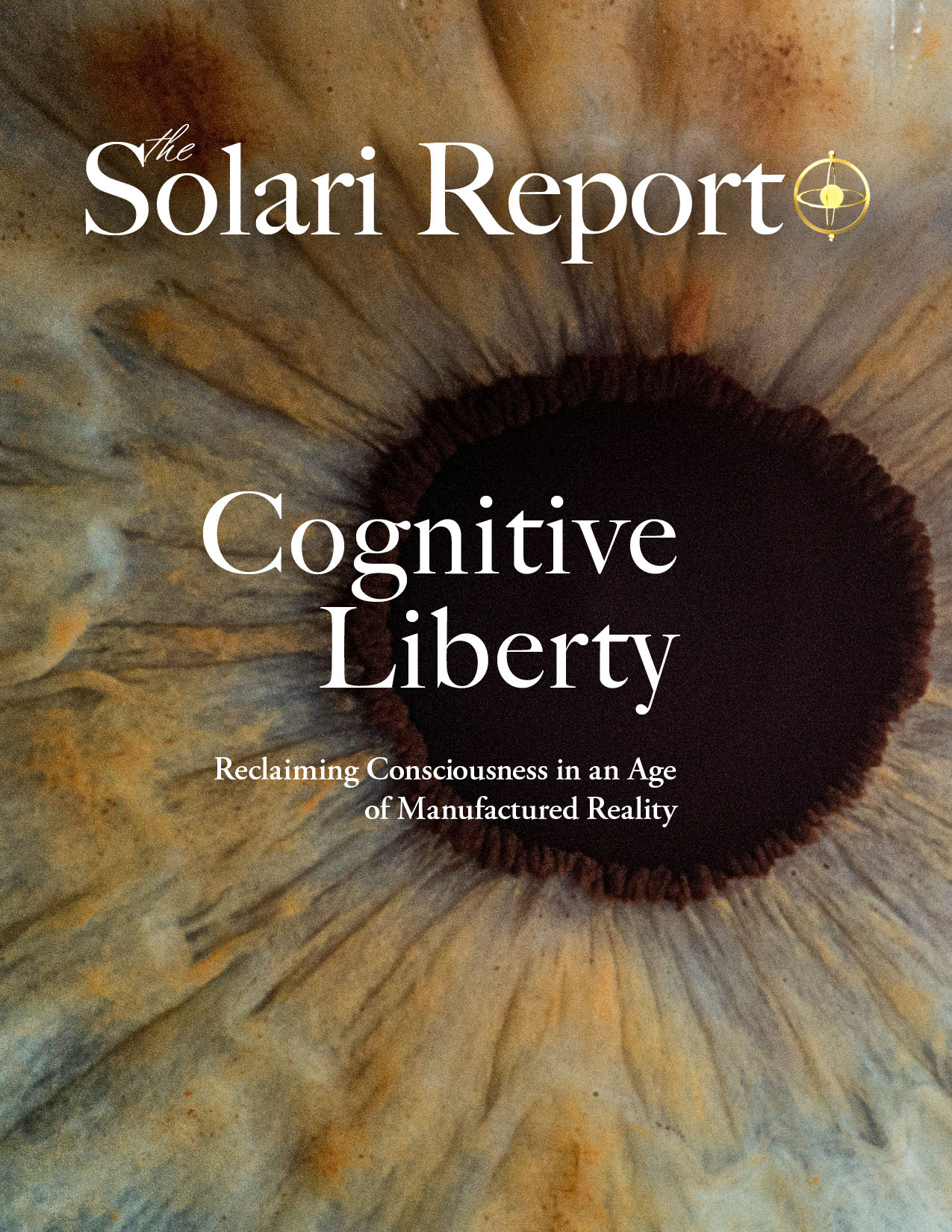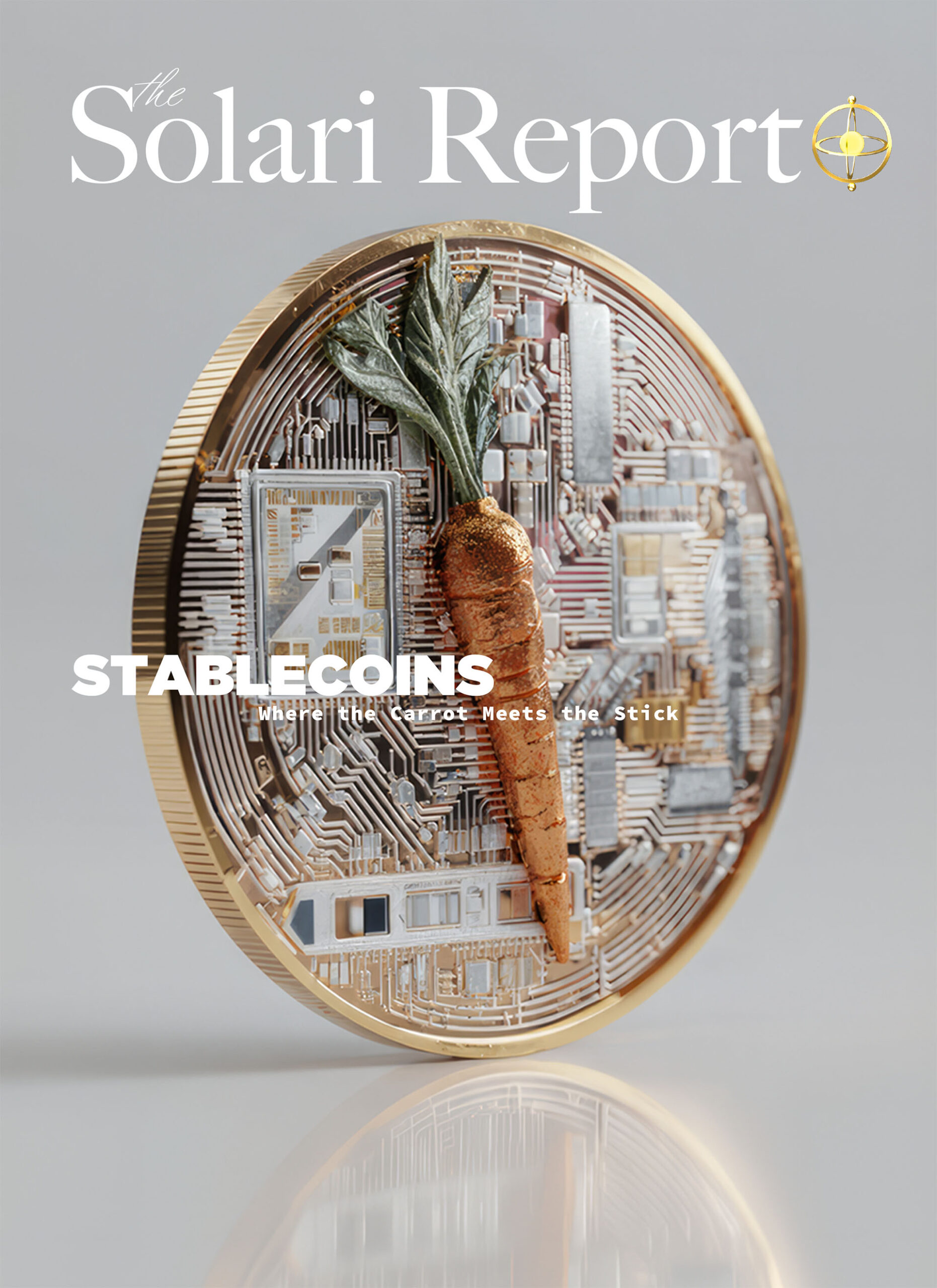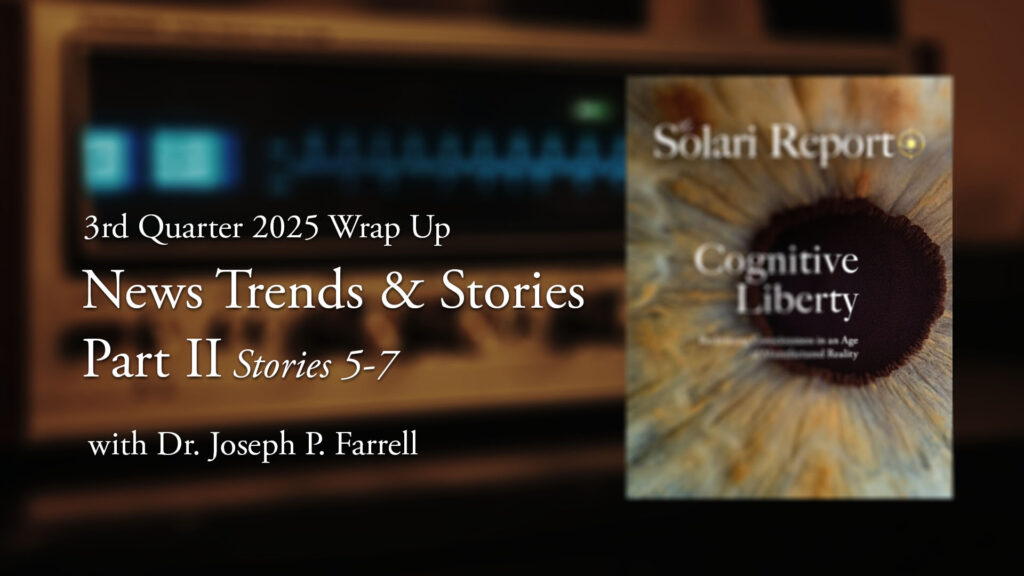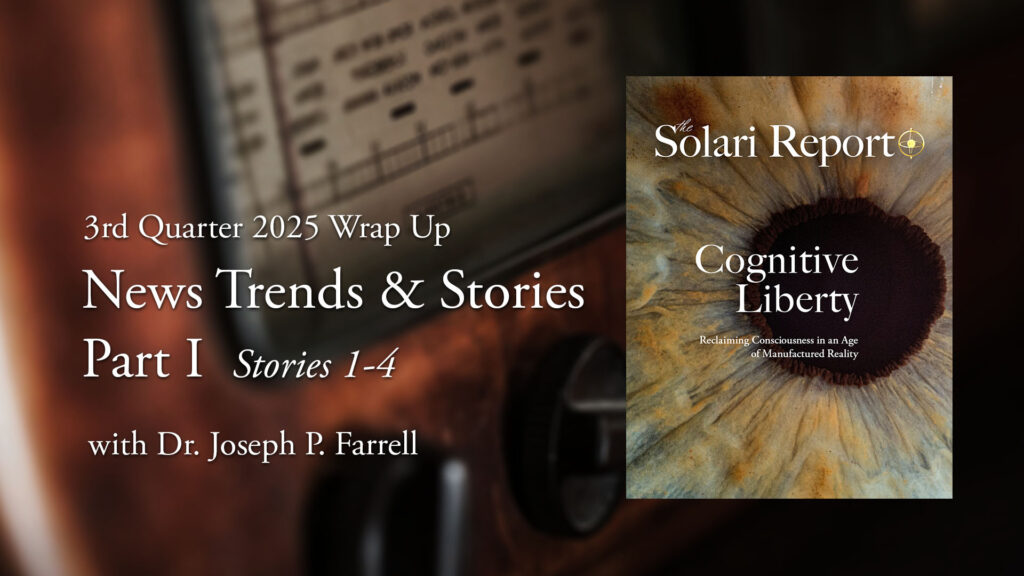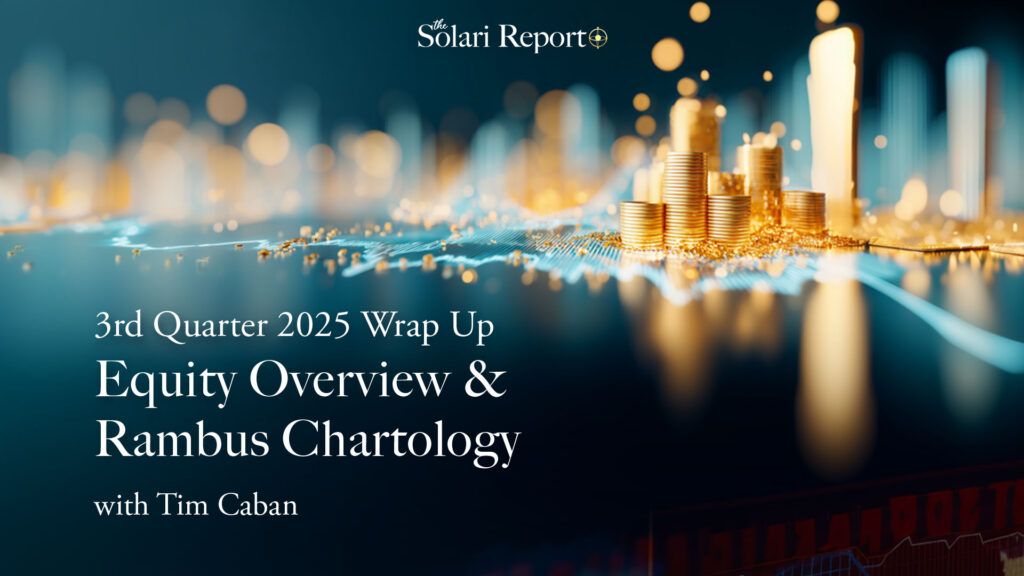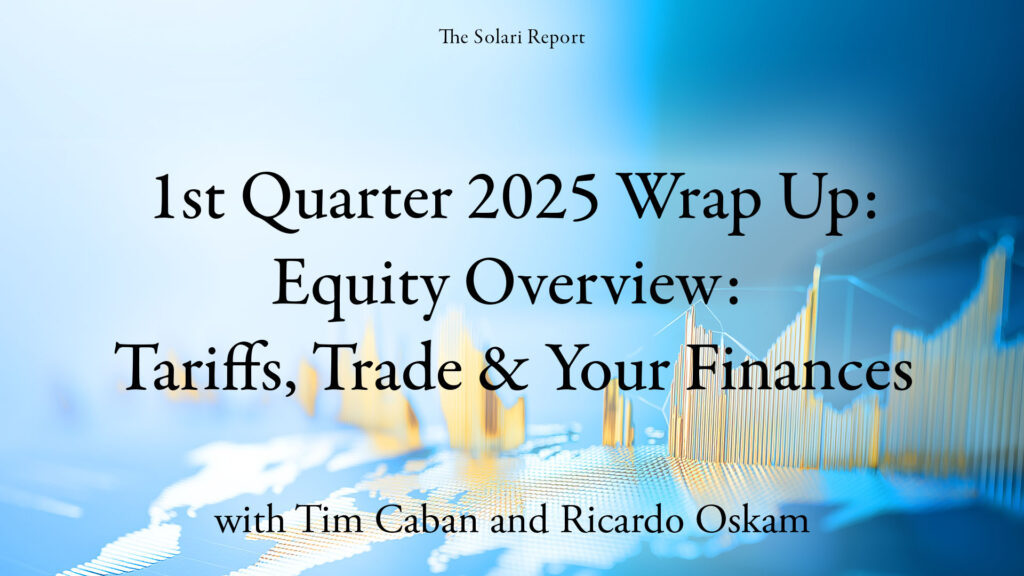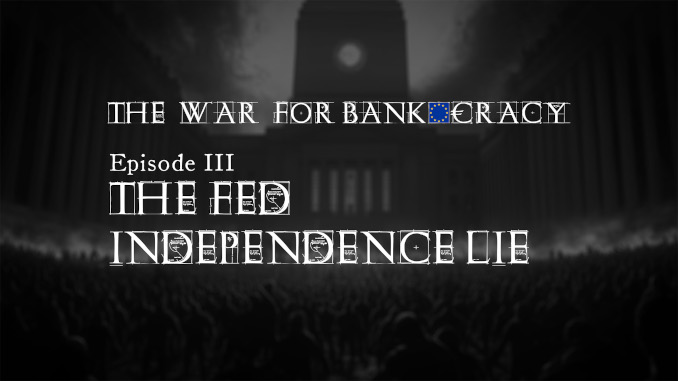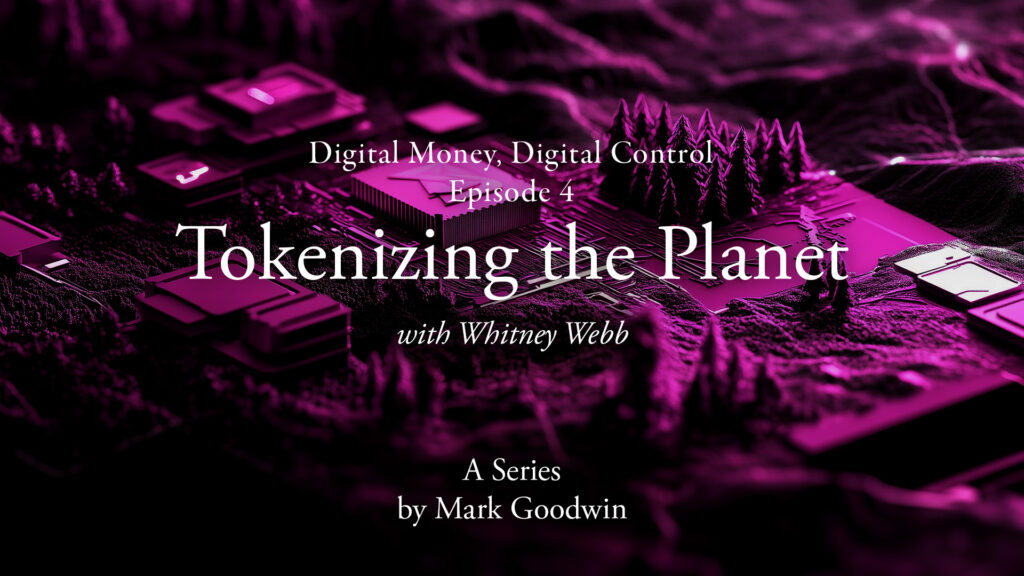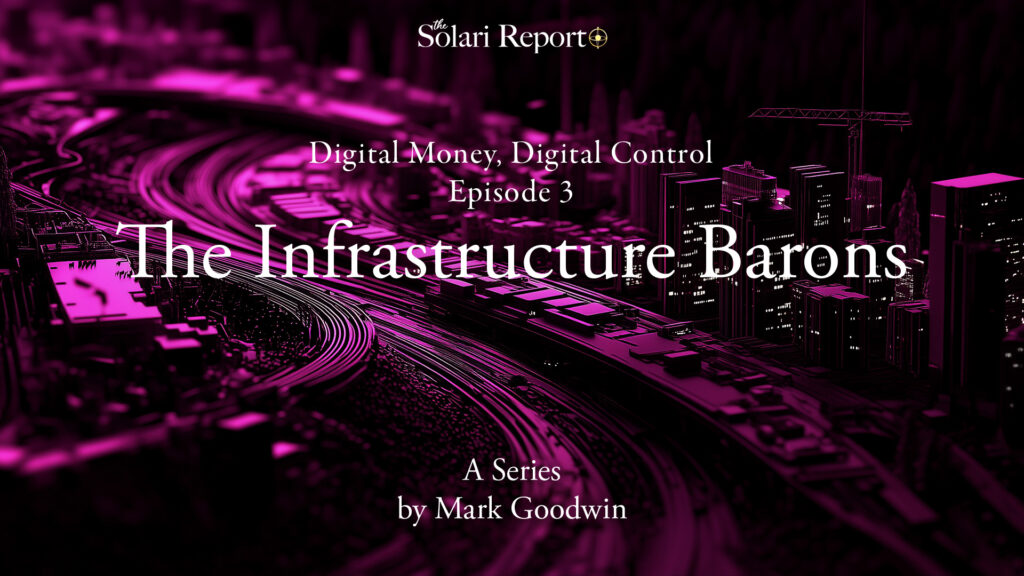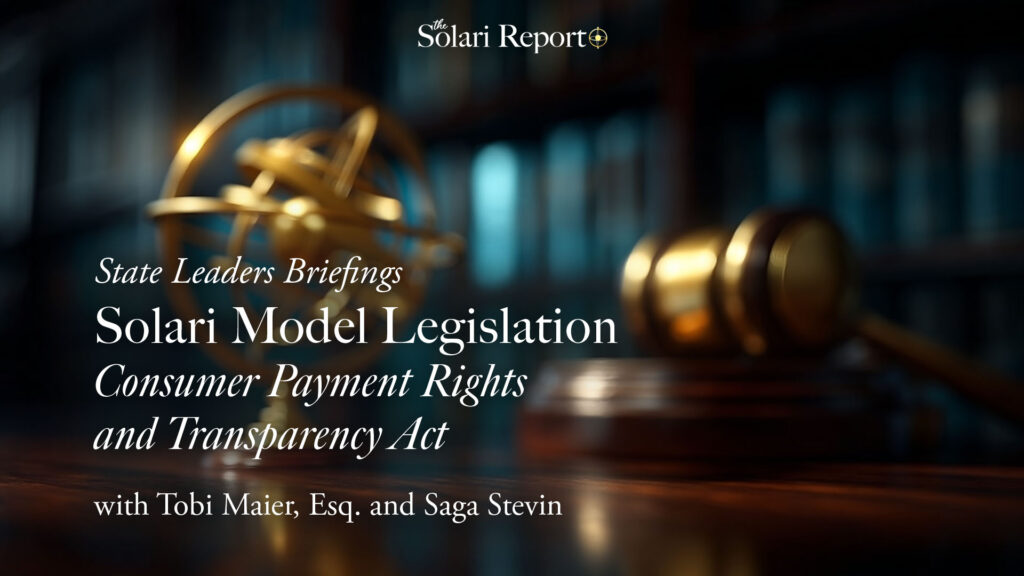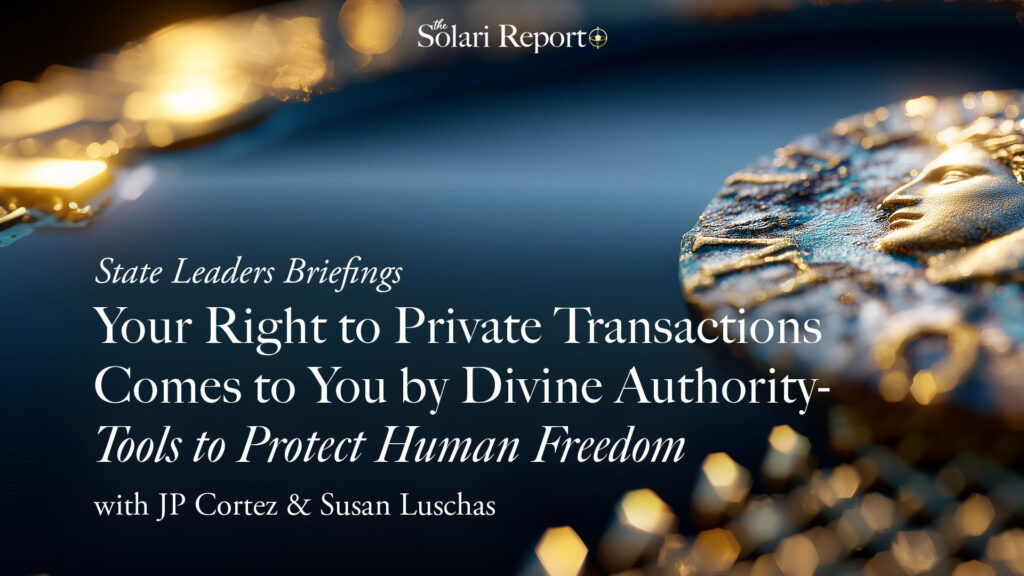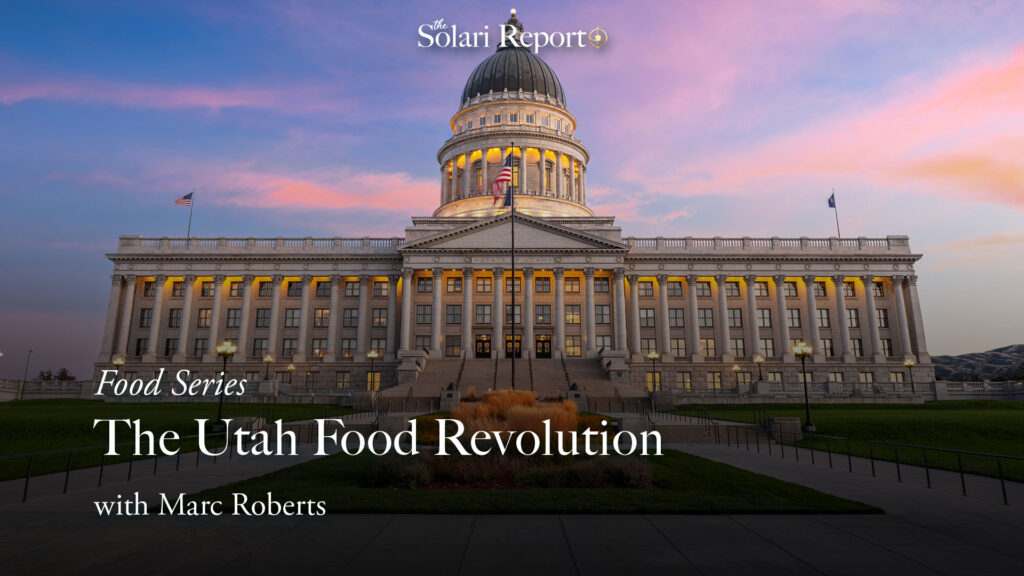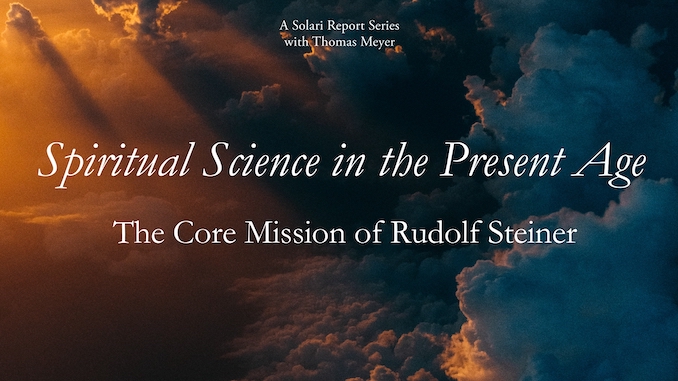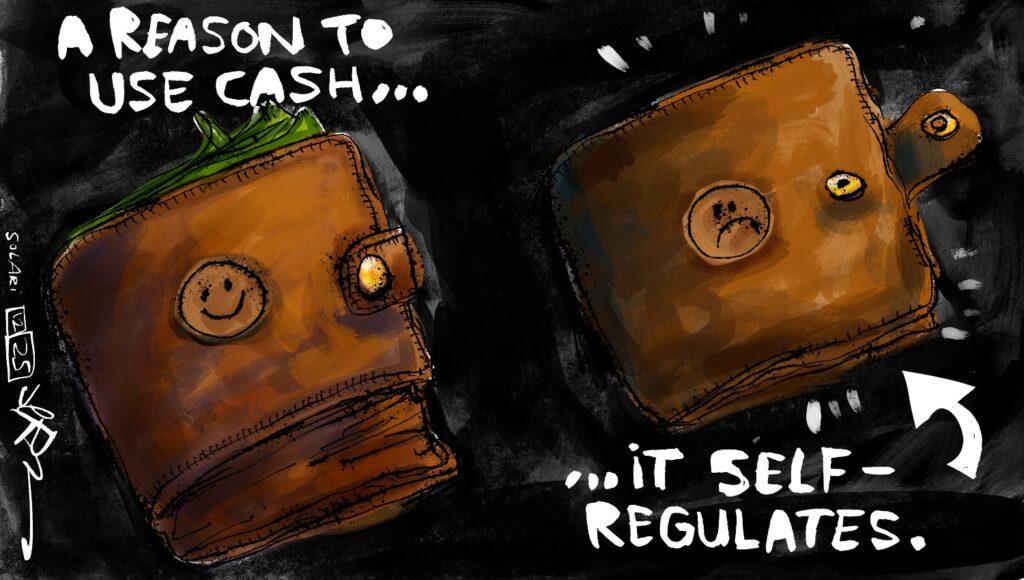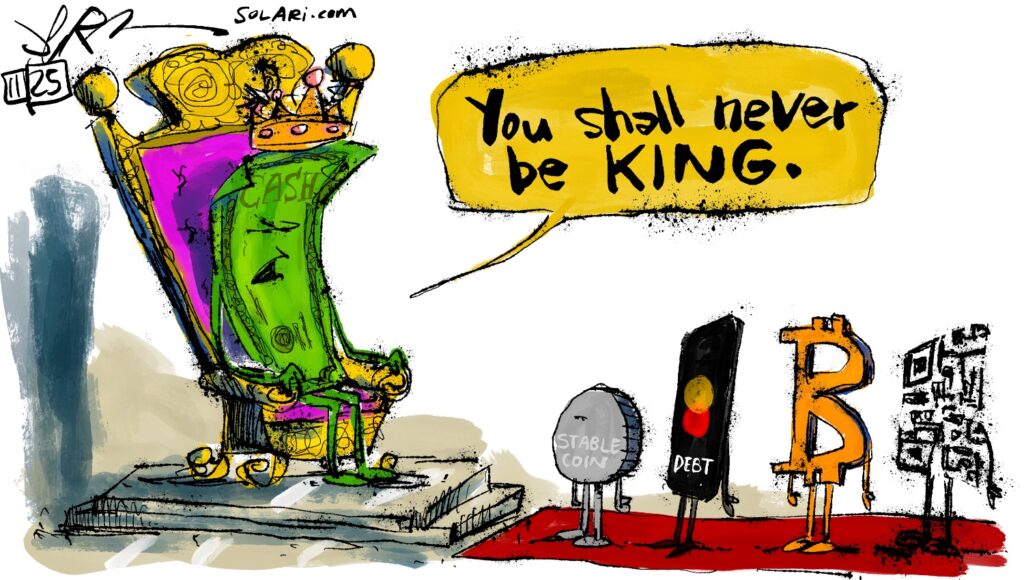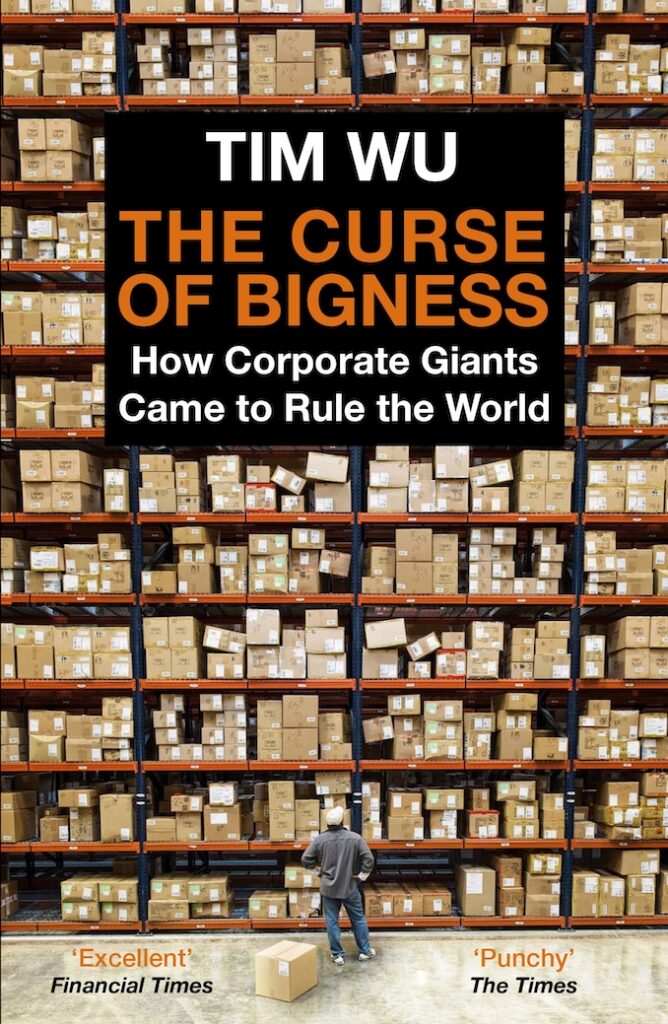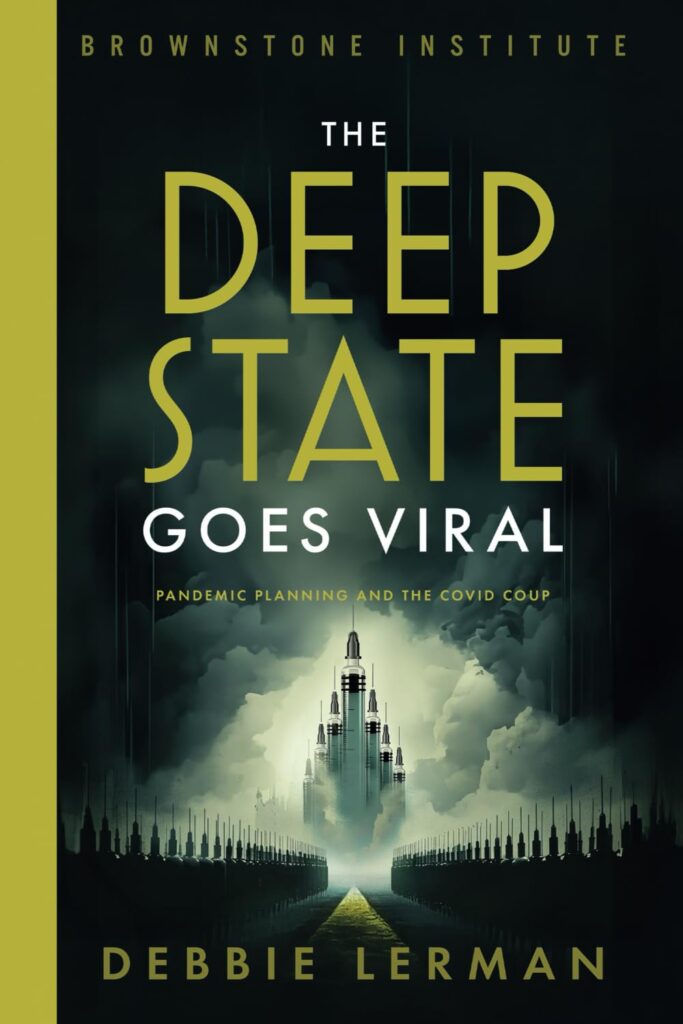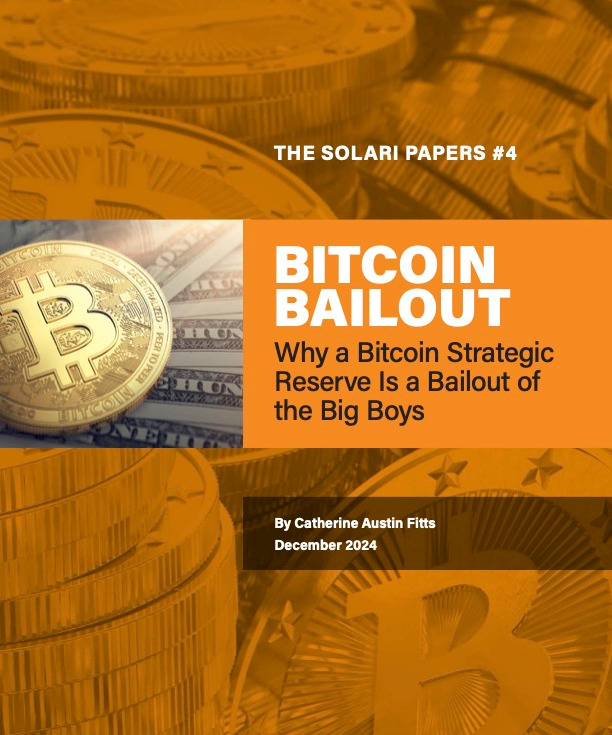Become a member: Subscribe
Book Review
The Technocratic Dark State
Trump, AI, and Digital Dictatorship
Iain Davis
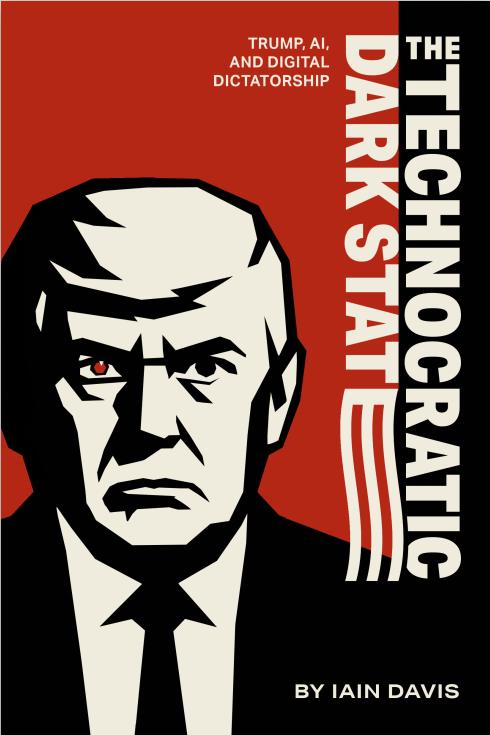
The Technocratic Dark State
Trump, AI, and Digital Dictatorship
By Iain Davis
Book Review, November 5, 2025
By John Titus
If you want to understand exactly what the reigning kleptocracy is up to and where its tech-oriented luminaries like Elon Musk are headed, The Technocratic Dark State: Trump, AI, and Digital Dictatorship by Iain Davis is an absolute must-read. Davis reached out to me and asked if I’d read it. I’m glad I agreed. The book blew me away as much as anything I’ve read in 20 years and provided so many penny-drop moments that I lost count of them.
In The Technocratic Dark State, Davis offers three crystal-clear snapshots of the complex machine that the reigning criminal class is building in order to steal every last legal right and asset from us: first, where the various parts of this machine came from; second, where the machine stands now (under the second Trump Administration); and third, what final form it is likely to take if left unchecked (which, as Davis is careful to point out, is not set in stone).
For me personally, and in addition, the book has likely eliminated a long-standing annoyance, which I’ll talk about last.
Here I’ll describe what the book covers, but depart from its sequence. My own basic point of view is monetary history and mechanics, which Davis does an excellent job of covering, albeit later on in the book; he bats leadoff with the cast of tech bros like Thiel and their beliefs, which I’ll talk about toward the end. To me, the sequence is of no consequence so long as the whole story is complete, which it most certainly is with this book.
The central conflict driving the events of the last few decades is the dollar-denominated debt-based monetary system, collapsing under the weight of explosive debt levels. Davis tells this story largely through a speech given by Mark Carney in 2019, when the powers that be began in earnest to get a handle on the problem. It is no accident, Davis tells us, that this is when Mark Zuckerberg and Peter Thiel became frequent fliers on Capitol Hill.
Davis does a very solid and convincing job describing the built-in resistance to making any changes at all to the current monetary system: the sovereign power to issue money, lodged for centuries as it has been in the hands of an age-old private oligarchy, is the source of that old oligarchy’s power. And yet, they have to do something—make some change to that system—or else their old system of monetary control will tear itself apart, vastly diminishing their power.
This is where the new oligarchy—led by technocrats like Peter Thiel—comes in. They are offering the old oligarchy both a solution to the massive debt problem as well as “improvements” (like greater social control) to the old monetary system, and their offer involves extending the long-established traction of the U.S. dollar.
This particular solution, Davis points out, obviates the need for switching over from the U.S. dollar to the Chinese renminbi. That’s music to the ears of the old oligarchs and gives the new oligarchs and their plans a huge leg up.
The continuity in currency offered by the new technocrats takes the form of stablecoins, which are backed (supposedly) dollar-for-dollar by familiar and widely accepted assets like U.S. Treasuries. The upside of stablecoins to new and old oligarchs alike is that they can be issued by anyone with a coin, basically, and not just banks.
Under the current system, only banks can issue new money in the form of bank deposits; this is the digital currency that has been in place for decades. When you run a credit card to pay for a $30 pizza, somewhere a bank has issued $30 in new deposit money, backed by your promise to pay your credit card bill. Often the bank that’s behind the actual Visa or Mastercard remains invisible; Comerica was at one time a major leader in the U.S. in this regard. But visible or not in a credit card transaction, there is a bank somewhere in the mix, and it issues new deposit money in the exact size of the credit card transaction.
The difference between a bank like that and a stablecoin issuer is that the bank is regulated by one or more public and federal agencies such as the Federal Deposit Insurance Corporation (FDIC), the Office of the Comptroller of the Currency (OCC), and the Federal Reserve Board of Governors. Not so with stablecoin issuers, which aren’t regulated by any federal agency—not yet, anyway.
But the continuity that stablecoins offer with the U.S. dollar—that “interoperability,” a term I’d wrongly dismissed as another empty buzzword until Davis set me straight—is its fundamental virtue insofar as the old oligarchs are concerned. The total lack of transparency and regulation are just gravy on top of that core virtue.
On the latter score, make no mistake here: it’s the Wild West all over again, unregulated and opaque once purely private parties are allowed to issue money essentially without limit. In the current system, yes, it is private banks like Citigroup and JPMorgan Chase that issue money (whenever they lend), but they are heavily regulated and have extensive reporting requirements such as quarterly and annual 10-Qs and 10-Ks that they must file with the Securities and Exchange Commission (SEC) for public inspection.
The utter lack of transparency in the new technocracy’s stablecoin scheme is only the beginning, insofar as how inimical it is to the old and democratic way of doing things. Indeed, Davis does an absolutely outstanding job of detailing just how hostile new and old oligarchs alike are to representative forms of government. In point of fact, one of the major features of the new technocracy—if not its entire purpose—is to eliminate representative governments altogether and replace them with a system of neo-feudalism comprising large but local technates across the globe.
As an example of how this might look, Davis points, convincingly, to an early prototype—the weekly Zoom meetings held by Mayor Michael Bloomberg of New York during the pandemic farce, where some 400 mayors across the U.S. got their marching orders on which social distancing and masking requirements were to be instituted and how.
The breaking up of the U.S. and other Western nations into fiefdoms brings us to another topic in The Technocratic Dark State and to another problem that the new oligarchy solves for the old oligarchs, namely, unsustainably high levels of U.S. debt.
Currently, total U.S. public debt is fast approaching the $40 trillion mark. According to Davis, “the projected value of tokenized natural capital assets is $4,000,000,000,000,000 (four quadrillion US dollars, or $4QD).” He doesn’t say what fraction of that comes from the U.S., but if it’s proportionate to global GDP, then the U.S. is sitting on about $1QD. That gibes with Howard Lutnick’s figure of $500 trillion, which he tossed out on the 2024 campaign trail when describing Trump’s plan for retiring the debt, which amounted to selling off the nation’s natural assets. And indeed now, Davis informs us, President “Trump’s sovereign wealth fund policy hopes to capitalize on and deliver ‘fiscal sustainability’”—which both the U.S. Treasury and the Fed have been warning is a problem for years.
The sale of U.S. natural assets to private conglomerates such as BlackRock is perfectly consistent with “deterritorializing” the U.S. into several fiefdoms run by tech overlords like Elon Musk and Peter Thiel. Once natural assets are sold off like that, buyers like Goldman Sachs can then decide on how to monetize the assets by renting them back to the very citizens under whose noses those assets were sold in the first place.
In large part, the second Trump Administration, Davis makes clear, is all about privatizing sovereign functions and assets until there’s no country left—only the husk of its old currency, now digitized and allocated by credit scores and the like.
This brings up yet another topic that Davis covers with remarkable skill: keeping the public in the dark about what is going on. In part, this is accomplished by political deception, specifically putting labels like “libertarian” and “free enterprise” on schemes and ideas that are anything but—which then are packaged and sold to unwitting boosters of one political stripe or another. As Davis puts it with one example, “being under the yoke of Palantir’s tyranny, instead of government oppression, is not the sovereign freedom of the individual that real libertarians seek” (original emphases).
Davis makes it clear, with a discomforting array of examples, that deception is an inherent and indeed critical feature of the daily news cycle.
The best part of the book, in my opinion at least, comes early, from the opening chapters in which Davis introduces us to the cast of tech bro characters. Their origins are far more fascinating than the standard pablum that’s become hackneyed from decades of repetition. As media legend would have it, Jeff Bezos and the gang started out as awkward teenage kids whose genius launched them into the billionaire stratosphere from Silicon Valley garages. To me, these were obvious yarns from the start. Thankfully, Davis had the patience to track down the far more credible reality. Davis traces the rise of both Peter Thiel and Alex Karp, for instance, back to the Younger (“W”) Bush Administration and 9/11 (p. 169):
The first thing Poindexter did at the helm of the new IAO [Information Awareness Office, created in 2002] was establish the Total Information Awareness (TIA) project. Empowered by the passage of the PATRIOT and Homeland Security acts, he set up the TIA as a data-mining operation that, according to New York Times columnist William Safire, was intended to snoop on the private life of every US citizen.
The TIA project ran into difficulty almost immediately. When the US public learned about its intentions the same year as its inception (2002), the outcry led to its funding being officially withdrawn the next year (2003).
In the same year (2003), Peter Thiel incorporated Palantir Technologies. Seeing that the TIA was in trouble, he and Palantir co-founder and CEO Alex Karp reportedly met with Poindexter to impress upon him that they shared his vision of a US domestic digital
gulag.At the time, the TIA was a public entity housed in the Pentagon’s DARPA office. Thiel and Karp convinced Poindexter—probably without much resistance—to let them develop the TIA system as a private entity [emphasis added].
And there in the final passage, you have the current political scene in a nutshell, all of the 9/11 security state excesses taken out of the public sphere and hidden away in private companies.
That, in a single bottom line, is what’s going on right now.
One reason I find The Technocratic Dark State so satisfying is that it scratches a particular personal itch that I’ve had for far too long and that arises from the thoroughly annoying personalities of the tech bros.
For the last couple of decades, I’ve experienced a fairly common recurring bad dream in which I’m about to sit for a final written exam in a class I haven’t attended all semester. My own personal version of this fairly pedestrian nightmare, however, doesn’t make a lick of sense, because the class I am about to fail is Legal History, which was in actuality a personal favorite that I never missed and represented one of my highest marks in law school.
I have zero doubt that the persistence of this nightmare stems from the real-life legal history that is being not so much “taught” as unfurled by a tech-worshipping media in which the “professors” could not serve as more pathetic negations of my fearsome Legal History professor in law school. He wore perfectly tailored three-piece suits and spoke so clearly and precisely, without notes or microphone, that no one in the 300-seat classroom missed or misunderstood even a syllable, such was his booming and certain voice and his command of the language.
The tech bros who have been appearing on CNBC and the like for the last several decades, in contrast, are a total mess. They dress like they’re headed to the mall and sound like college DJs eating a pizza, mumbling in amorphous parables bogged down by jargon and total nonsense. Many can’t get through a sentence. But there is one point on which they and their media sycophants are clear about: whatever they are hawking—crypto this, cyber that, data clouds the other—it is the future. Beyond that, I have no idea what they’re actually talking about.
For the life of me, I can’t understand how they got to where they are or amassed the wealth they are advertised to have—unless it’s as frontmen putting on one big act.
Peter Thiel—who occupies a leading role in Davis’s book—is exemplary in this regard. The man is incapable of completing a sentence without being tackled to the ground by one more lacuna of “ummmmmms” and “ahhhhs” as he struggles so idiotically that I yearn for the relief that the silence of an actual deer in headlights would bring. But rather than slapping Thiel across the face to get him to snap out of it, his media enablers react to his stupefaction with brown-nosing awe. These repulsive displays unnerve me.
Why, I wonder, have people like Thiel and Mark Zuckerberg and Elon Musk and Bill Gates been selected as media models? What are their handlers up to, exactly? What’s behind this colossally fraudulent farce? These deeply troubling questions, I am convinced, are what’s given rise to my recurring nightmare—the expression of my own personal anxiety about where all of this is headed.
Iain Davis cuts through all of this with the old-world clarity of my legal history professor, suctioning the vast multi-decade techno-fog into a single vessel, a good old-fashioned book. Until I read this book, I’d been watching a conveyor belt move an endless supply of different parts across a factory floor. In The Technocratic Dark State, we now have the fully assembled imperial ship captured inside a single glass bottle, available for inspection and study.
Oh, and in case you’re wondering, the new technocratric dark state is global in nature. It’s not like you’ll be able to escape it by moving from Waukegan, IL to Rio or Moscow, where another tech fiefdom will await your arrival with a retinal scanner.
I can’t recommend this book in strong enough terms. I plan on giving away copies to other people, something I haven’t done in decades. Hopefully, physical copies of the book will be available in time for Christmas.
Specifically, it’s a book that you can give to people who know something is wrong but can bring themselves to take that notion only so far. I have friends and family, for instance, who are well aware that the financial system and the markets are rigged against them at every turn, but who are careful not to push too hard on the implications of that conclusion. Davis’s book is more than adequately footnoted (without the didactic excess of law review article footnotes) and may give them the ammo they need to punch through hard enough to reach that “I-refuse-to-be-party-to-this” moment, which when replicated in sufficient numbers can kick off a revolution in people’s hearts and minds—which is where the real action is.
As one of America’s leading colonial revolutionaries, Samuel Adams, said: “It does not take a majority to prevail, just an irate, tireless minority keen on setting brushfires of freedom in people’s minds.”
I am here to tell you that Iain Davis has marked himself with this astonishing work as a professional arsonist in the tradition of Sam Adams. By helping Davis, you’ll be helping yourself and everyone else. You can do that by letting him know you’re interested in his book:

Log in or subscribe to the Solari Report to enjoy full access to exclusive articles and features.
Already a subscriber?



